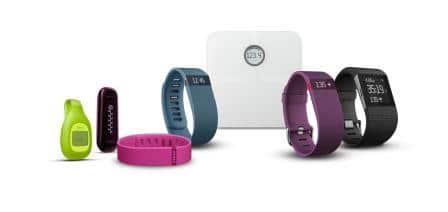
The impact of wearable tech on how brands communicate
Social Media
Posted 19 Nov 2015
This year is set to be the year that wearable tech and connected health go mainstream. With an ever increasing number devices providing us with huge amounts of data about ourselves this technology has the potential to transform our understanding of our own health and wellbeing and motivate real behaviour change. While the long term impact of this much hyped category remains to be seen, from a PR and communications perspective there is already a great deal health, fitness, wellbeing and food brands can learn from the highly personalised relationships that wearable tech brands have with consumers.
Mintel predicts that the widespread use of devices that provide consumers with “knowledge and self-analysis” will be one of the biggest consumer trends in 2015 with nearly a third (31%) of UK consumers interested in using a smart watch with fitness functionality and 40% interested in a device that tracks heart rate, blood pressure and movement. Current category leader, our client Fitbit, has launched a TV campaign for the first time and big players in consumer technology are moving into this area, most notably with the hotly anticipated launch of the Apple Watch. However, the recent withdrawal of Google Glass shows that even the biggest brands can struggle to navigate this exciting and unpredictable new category.
So what does this mean for marketers?
Time to get personal
Products and apps that track everything from steps to sleep to heart rate are providing consumers with unprecedented data about their own health and wellbeing. For these highly informed and engaged consumers mainstream health and lifestyle advice like taking 30 minutes of exercise five times a week or eating five a day is far too general. Brands have an opportunity to have a much closer relationship with consumers by providing personalized advice, offers, and services based on their lifestyle and goals. We are already seeing this with health insurance programmes like Vitality Health and gym chains such as Fitness First moving into heart rate-based training programmes. Partnering with wearable technology devices or brands that track consumer behavior presents an opportunity for a wide range of brands in health, food, and fitness to do the same.
To motivate make it relevant
Helping people to understand their risk of developing health conditions like heart disease, diabetes or dementia and take preventative action is one of the biggest communications challenges society faces today. It is in the interests not only of governments, charities and individuals but also brands and companies that provide products and services that can make a real difference. Big numbers, statistics, and complicated risk scores are hard to understand and easy to ignore. To motivate action you need to make risk personally relevant to an individual. Our client HeartAge uses a simple online test to explain someone’s risk of heart disease as their ‘heart age’. This approach has been clinically proven to lead to better health outcomes one year on than traditional ways of communicating risk.
Re-think role models
The 2012 Olympics and 2014 Commonwealth Games have created a whole new generation of sporting heroes to entertain and inspire us. But whether Jessica Ennis-Hill, Mo Farah or the Brownlee brothers are really the right role models to encourage us to get off our sofas and get active remains an open question. Sports England’s highly praised This Girl Can campaign, aimed at encouraging more women to participate in sport and physical activity, uses real women of all ages, abilities and body shapes participating in real activities – and enjoying themselves to challenge the ‘fear of judgment’ that research shows hold women back from being active. So when looking for a face for your wellbeing campaign in 2015 look beyond the obvious celebrity or sportsperson and consider who your audience really relates too, it may well be someone from their own community.
Size doesn’t matter, at least not as much as we think
The obesity crisis has been top of the health and wellbeing news agenda for several years with countless initiatives from the public and private sector dedicated to tackling the problem. However, recent research from the University of Cambridge suggests that the real public health enemy is inactivity rather than obesity. Even hardcore gym goers are not immune as it’s the time you spend sitting that serves as the best predictor of health. A shift in focus from weight to activity provides brands with an opportunity to engage with consumers around positive messages about small steps they can take to improve their health and wellbeing.
Harness the power of communities
From slimming clubs to social media platforms the power of communities to support people in achieving their health and fitness goals is well known. Devices like Fitbit encourage users to create their own communities for support and motivation through functions like leaderboards and challenges. Brand communities cannot only forge beneficial connections between consumers but between consumers and brands acting as a testing panel, word of mouth ambassadors and even as a source of content or ideas. Wearable devices and tracking apps are making it possible for brands to use real-time data from their communities in new and exciting ways, for example, how many steps did the average person take in February compared to January?
As wearable tech devices transform individual lives by providing people with insightful personal data, motivating them to change behaviour, introducing them to inspiring people, encouraging them to take small steps to improve their health and connecting them to supportive communities, we can also expect them to have a big impact on the way health, fitness, wellbeing and food brands communicate.
This entry was written in cooperation with our WorldCom partner Kaizo. The original article can be found here: http://kaizo.co.uk/impact-wearable-tech-brands-communicate/
https://www.hbi.de/en/2018/08/08/technology-innovation-trends/